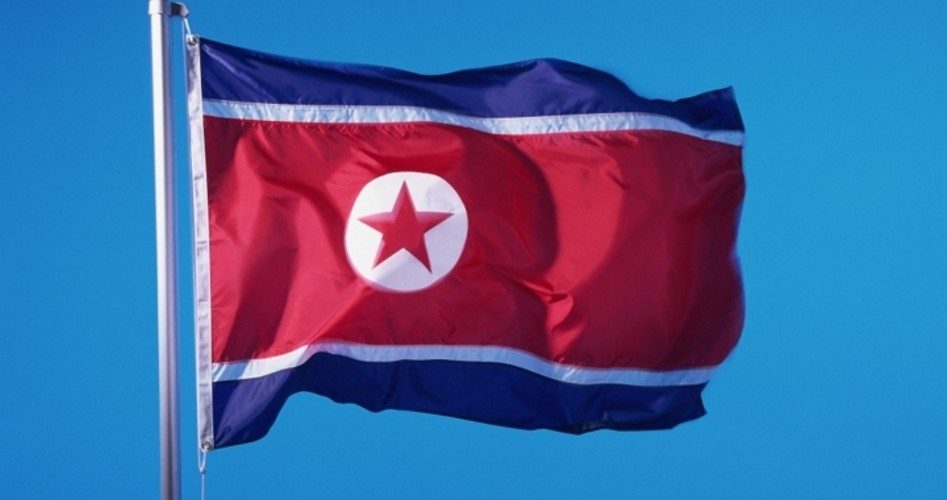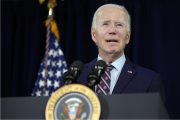
On March 11, as the United States and South Korea began their annual joint military exercises, the government of North Korea responded by cutting off the telephone “hot line” between the two Koreas at the border city of Panmunjom. The Pyongyang regime also waged a propaganda barrage through its state-controlled press. The Wall Street Journal noted that a report in Rodong Sinmun (the official newspaper of the Central Committee of the Workers’ Party of Korea — the ruling political party of the communist state) said that the 1953 armistice suspending the Korean War had been “declared invalid.”
South Korea’s unification ministry reported on Monday that the North did not answer two attempts to communicate by telephone at 9 a.m. and 4 p.m. local time, reported the Yonhap News Agency.
CNN reported that latest joint U.S.-South Korean military drills, known as “Key Resolve,” follow the “Foal Eagle” joint exercises that began March 1. The exercises, which are scheduled to last two months, include more than 3,000 U.S. personnel. Both operations are annual events and have regularly been a source of friction with the North.
A spokeswoman for South Korea’s Unification Ministry said that the latest crisis is more tense than usual, saying: “Overall, there’s a heightened sense of alert this time.”
BBC News attributed the heightened tensions not only to the “more belligerent rhetoric” coming from Pyongyang, but because of a series of recent events, noting that “North Korea’s launch of a long-range rocket in December, its apparently successful nuclear test in February and the fresh UN sanctions imposed on it this month have all added to the sense of tension on the peninsula.”
South Korea’s daily newspaper, The Hankyoreh, painted today’s crisis in grim terms, reporting that “many observers are voicing growing fears of a potential clash.” The paper noted:
The belligerent conditions date back to March 12, 1993, when North Korea responded to International Atomic Energy Agency demands for special inspections by pulling out of the Nuclear Non-Proliferation Treaty (NPT). Almost twenty years to the day later, both sides are once again issuing rhetoric about “unsparing retribution” and “annihilating the other side’s regime.”
The Hankyoreh reported that North Korea’s chairman of its Joint Chiefs of Staff , Hyon Yong-chol, had accompanied military officials on a March 9 inspection of Panmunjom, and that the following day, North Korea’s Rodong Sinmun reported that the country’s army, navy, air force, and anti-aircraft units were “just waiting for the final order to attack.”
Despite its citations of the North’s ominous statements, the South Korean daily was optimistic regarding several other aspects of North-South relations. Among these was the uninterrupted operation of the Kaesong Industrial Complex, a collaborative economic development six miles north of the border where 780 South Koreans reside. The paper noted that this lack of North Korean reaction was in contrast to the way it responded to UN Resolution 2087 passed on January 23, when it promised an immediate “physical response.”
Several days later, on February 7, the North Korean NKNews.org reported that “North Korea made a fresh threat to close down the Kaesong Industrial Zone and turn it back into a ‘military zone’ if South Korea enforces UN sanctions on items made there.”
The Hankyoreh noted with optimism that the North Korean foreign ministry “has not announced any specific actions — such as a nuclear weapons test — in response to United Nations Security Council Resolution 2094.”
Under UN Security Council Resolution 2094 on North Korea, adopted on March 7, the UN Security Council “unanimously adopted a resolution to impose additional sanctions on North Korea in response to that country’s February 12th announcement of a nuclear test.” Resolution 2094 condemned North Korea’s nuclear and ballistic missile programs, provided for financial sanctions against the regime, strengthened states’ authority “to inspect suspicious cargo and deny port and over flight access to DPRK-affiliated shipments,” and numerous other measures.
North Korea’s response to the annual U.S.-South Korean exercises, while not atypical, comes at a time of heightened tensions, soon after the North’s recent nuclear tests and retaliatory UN resolutions. Analysts in the West have interpreted these events in various ways. Van Hipp, former Deputy Assistant Secretary of the U.S. Army, and Chairman of American Defense International, Inc., wrote an opinion piece published by Fox News, “What to expect from an erratic North Korea,” in which he cites “open source intelligence,” or publicly available sources.
Hipp lists his assessment of events on the Korean peninsula as follows:
— A massive North Korean mobilization is presently underway, complete with troop movements, submarines on alert and missile batteries being deployed.
— Look for 2 more nuclear bomb tests and 1 other rocket launch to further test their ballistic capability this year. In fact, new preparations at the Puggye-ri nuclear bomb test site have been detected since last month’s test.
— North Korea and Iran are both using the same miniaturized warhead design that can be traced back to the infamous Pakistani scientist, Dr. A.Q. Khan.
— Iranian intercontinental ballistic missile (ICBM) technicians are continuing to work on the next North Korean missile test.
— North Korea has obtained proven missile control electronics from Russia and China.
— It appears that North Korea is expanding a new missile launch site at Musudan-ri, which will be much bigger than the missile test site at Tongchang-ri, where the Unha-3 rocket was launched in December, 2012.
In response to the above-listed threats, Hipp recommends that the Obama administration reverse it decision to decommission Missile Field 1 (which houses silos for missile interceptors) at Fort Greely, Alaska. (Missile interceptors were originally deployed to Fort Greely under President George W. Bush.)
Hipp also recommends the establishment of a type of Cold War-style “Radio Free Europe” or “Radio Marti” network to broadcast news to North Korean citizens in order to break the regime’s censor of news to its own citizens.
Hipp writes that “The North Korean threat is the greatest nuclear weapons challenge to the United States since the Cold War.”
He may well be correct in this assessment, but unfortunately, U.S. response to the threat is often subjugated to official United Nations direction, in the form of UN resolutions.
It must be remembered that the present state of the Korean peninsula, divided into a tyrannical communist regime in the North and a free nation in the South, came about as a result of a UN-directed “police action” that has never officially ended.
Although the war in Korea was supposedly fought to prevent to takeover of the Korean peninsula by communist forces pouring in from China, it was later revealed that Soviet communists within the UN apparatus had been funneling intelligence information to the communist side. As John F. Mcmanus noted in his book, Changing Commands: The Betrayal of America’s Military:
All military directives sent from Washington and the Pentagon to military commanders in Korea were also supplied to several offices at the U.N., including the Military Staff Committee, formerly led by [the Soviet official, Yuri] Vasilev and later by another Soviet General, Ivan Skliar. Everything the U.S. commanders were doing was known to communist leaders even before actions were taken.
The inability (or unwillingness) of the UN-controlled, but largely U.S.-supplied, forces to fully liberate the Korean peninsula led to the stalemate and tense division that exists to this day. To believe that the implementation of UN resolutions will reverse the conditions responsible for the ongoing state of crisis is wishful thinking, at best.
Photo: North Korean flag


